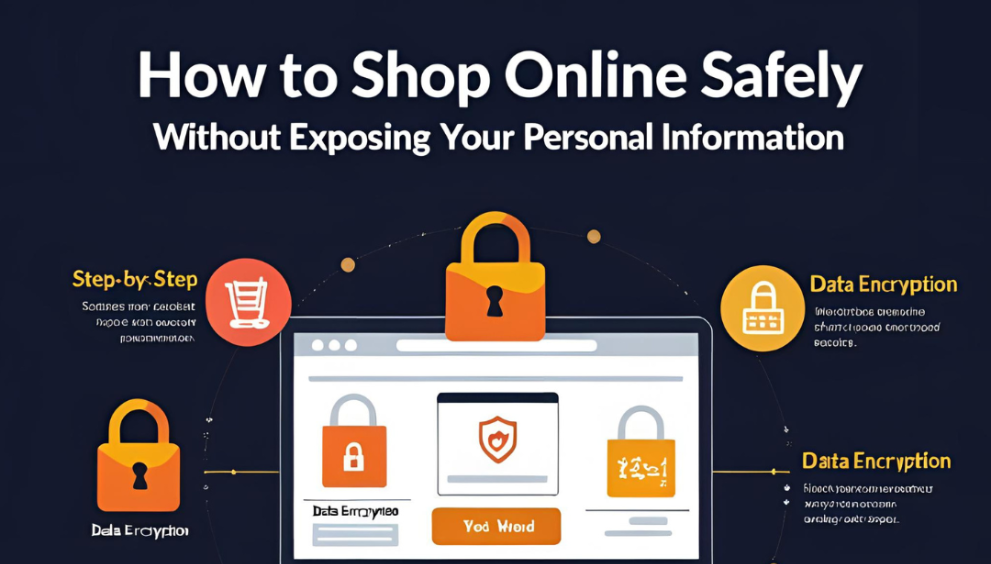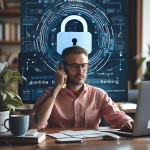Online shopping continues to grow every day, with the potential for convenience and freedom of shopping each day. With the advantage of convenience comes growing exposure to scams, stolen data, and financial fraud. Therefore, safe online shopping is necessary for protecting online privacy and safeguarding your personal and financial information from hackers.
You are either a keen shopper or an occasional browser, but you should be aware of how to protect your online presence. The following is a step-by-step guide to online shopping properly, safely and securely.
Why Safe Online Shopping Matters Today
Online shopping has become the new standard today. Be it groceries, clothes or even electronics, people buy almost everything from online shopping sites these day because of their convenience. But along with the craze of shopping on ecommerce platforms, malpractitioners and fraudsters have also increased rapidly. This is a matter of serious concern as you can lose your hard-earned money and even go bankrupt. Therefore, it is very important to know the means and methods of safe online shopping. Before, we move further into the discussion, it’s high time to know about the major risks of shopping online.
Top Online Shopping Risks You Need to Know
Online shopping is convenient but risky and may entail risks such as phishing attacks, where deceitful emails or websites make you provide sensitive information. Identity theft is also a probability, your credentials might be used to buy something on credit.
There are also multiple fake businesses in the name of big MNCs, selling counterfeit products, demanding online payment for a delivery which never arrives.
Essential Tips For Safe Online Shopping
Online shopping is simpler than ever, yet it can also be dangerous to you if you are not vigilant. By following some basic safety guidelines, you can keep your information and your money safe.
1. Use Reputable Websites Only
One of the simplest and greatest safety measures is purchasing from verified and trusted online stores. Use sites with an active SSL certificate, indicated by a padlock icon and the presence of “https://” at the start of the URL. Safe online shopping is the key, and it can be achieved by shopping on reputable websites. You can also refer to Quick Heal’s guide for further information.
2. Don’t Save Payment Info on Retail Sites
Reputed shopping websites can request that you save your card information for future use. Although it’s convenient, you have to keep in mind that it will expose your financial details just in case the site gets hacked. Always protect personal information by never saving it. Or enter card information manually with every purchase, or even utilise a safe wallet payment method.
3. Enable Two-Factor Authentication
Two-Factor Authentication is a facility which requires the user to follow two steps to authenticate and gain access. In this way, even if a hacker gets access to the password, he will have to provide the OTP, which is mostly linked with the phone number or email or provide an early generated pass code.
This extra step helps to secure your personal information to a great extent.
4. Avoid Public Wi-Fi When Shopping Online
Public Wi-Fi connections are unsafe for shopping online because your information can be hijacked by attackers. If you have to make a purchase, use a safe private network or VPN (Virtual Private Network). A VPN keeps your connection secure and complements strong Internet Security so that you can do safe and secure online shopping, even though you are connected to an open wireless network.
5. Watch for Phishing Scams and Fake Emails
Phishers will send fake emails mimicking offers from reputable merchants. They might have links that will download your information. Always check the sender’s email address and never open strange links. You can shop online safely by being careful.
How to Protect Personal Information During Checkout
When making in-store transactions, you should refrain from giving sensitive information. It is a necessity to check that the source is reliable and asks for only the crucial credentials in order to protect your personal information.
Recommended Tools for Safe Online Shopping
With various ways to steal your hard-earned money through online scams while shopping, there are some preventive tools you can use to reduce the chances of being attacked:
- A VPN can hide the trace of your IP address, which is indeed helpful to prevent online attacks.
- A safe and secure browser, which can detect malicious websites or keep track of previously malicious marked websites, can help you to be extra careful.
- A good antivirus like Quick Heal Total Security, which prevents you from multi-level threats.
What to Do If Your Personal Information Gets Exposed
There is still a risk of data breach despite security measures. If your data is hacked, act quickly. Report the matter to your bank or call the customer service, so that they can put unauthorized transactions on hold. Update account passwords at the same time and check your statements for suspicious transactions, especially if you suspect data mining activity or information leaks. All this will shield your personal data from misuse.
Regularly Monitor Your Bank and Shopping Accounts
It is advisable to monitor bank statements and online shopping accounts. Monitoring transactions frequently allows you to identify unauthorized transactions in time. Most banks also provide you with the option to subscribe to instant transaction alerts to protect your personal details and act on fraudulent transactions in real time.
Use Strong, Unique Passwords for Each Account
Weak or expired passwords are among the top reasons that lead to account takeover. Choose a secure, hard-to-guess password for a particular platform. Refrain from recycling the same password again and again at different places. Use small letters, capital letters, numbers and characters to protect personal information.
Log Out from Accounts After Every Purchase
If you are on a shared or public machine, be sure to log off from your accounts once you’ve finished shopping. This does not allow other people to use your own information. Logging out when you are finished shopping would be really helpful for secure online shopping.
Shop Smart, Stay Safe
Internet shopping is actually quite handy but never sacrifice your security. Just simply follow the steps discussed above. For instance, use secure websites, enable two-factor authentication, don’t use public Wi-Fi, and always log out from accounts to have a secure internet shopping experience.
Frequently Asked Questions
-
How to protect yourself when online?
Only shop using trusted platforms like Amazon/Flipkart. Never leak your personal details to any new/suspicious website and use a premium software like Quick Heal
-
How to be a smart internet user?
Be cautious of cyber crime and threats, and enable a strong alphanumeric password. Never use a single password on more than one platform and never open suspicious links.
-
How to check if a shopping website is safe?
Look for “https://” in the URL, verify the presence of a padlock icon, and read customer reviews to confirm authenticity.
-
How do you keep information private while online shopping?
Avoid sharing your card details and OTP online. If possible, opt for Cash/Pay on delivery. In this way, you can perform safe shopping without giving out online banking details.



